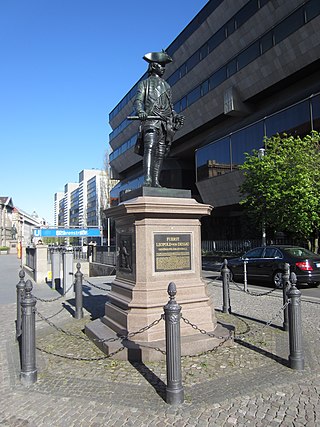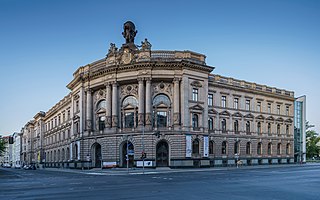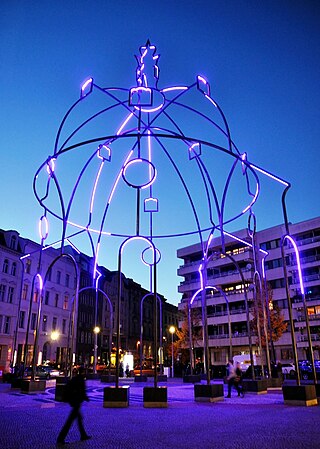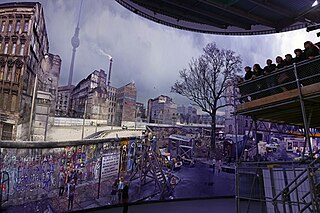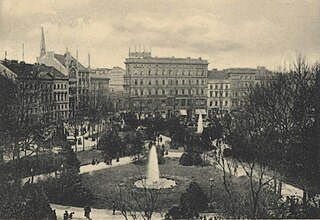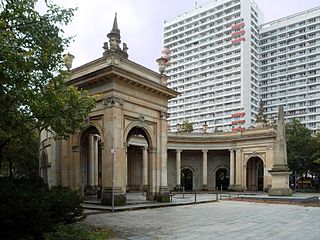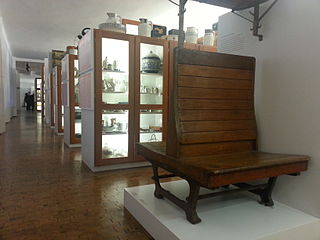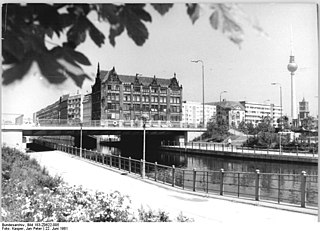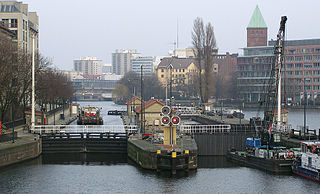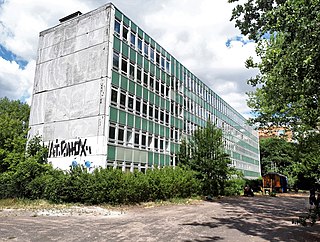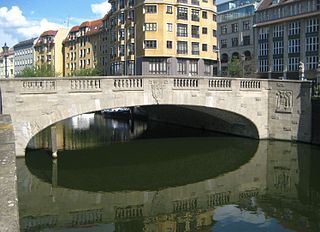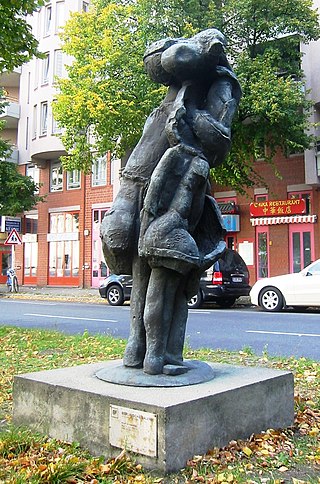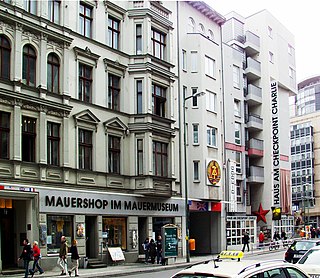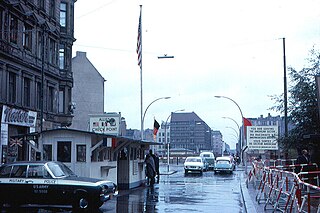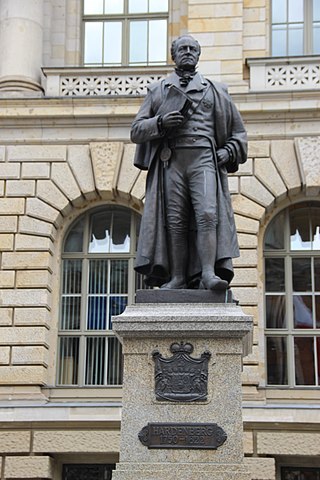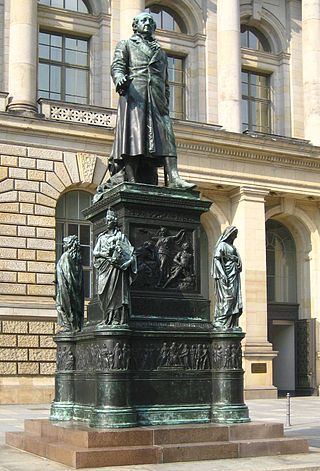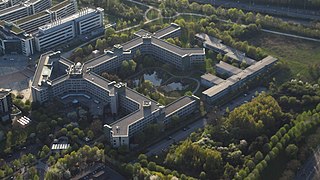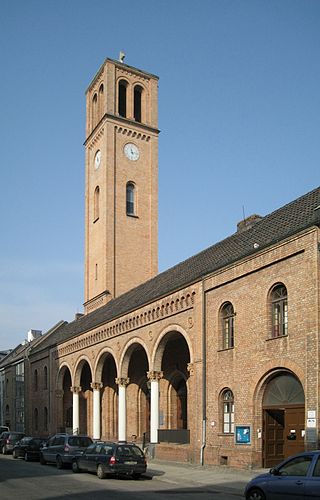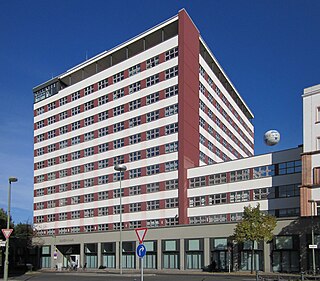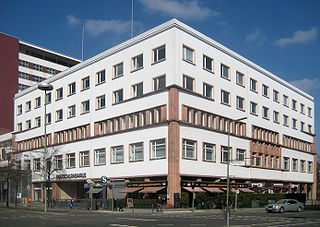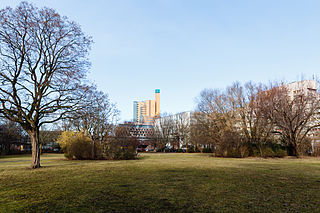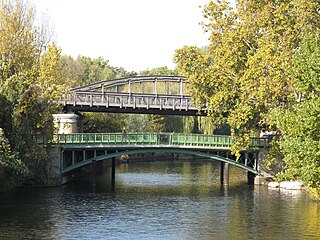Self-guided Sightseeing Tour #9 in Berlin, Germany
Legend
Guided Free Walking Tours
Book free guided walking tours in Berlin.
Guided Sightseeing Tours
Book guided sightseeing tours and activities in Berlin.
Tour Facts
12 km
260 m
Experience Berlin in Germany in a whole new way with our free self-guided sightseeing tour. This site not only offers you practical information and insider tips, but also a rich variety of activities and sights you shouldn't miss. Whether you love art and culture, want to explore historical sites or simply want to experience the vibrant atmosphere of a lively city - you'll find everything you need for your personal adventure here.
Activities in BerlinIndividual Sights in BerlinSight 1: Leopold I of Anhalt-Dessau
The statue of Leopold I, Prince of Anhalt-Dessau is a bronze sculpture installed at Wilhelmplatz in Berlin, Germany.
Wikipedia: Statue of Leopold I, Prince of Anhalt-Dessau (EN)
Sight 2: Communication Museum Berlin
The Museum of Communication Berlin is one of several locations of the Museumsstiftung Post und Telekommunikation, a foundation under public law that is directly established by the federal government. It is located in Berlin's Mitte district in the building of the former Reichspostmuseum on the corner of Leipziger Straße and Mauerstraße. The building has been a listed building since 1977.
Sight 3: Memoria Urbana Berlin
Memoria Urbana Berlin is a public sculpture by Spanish artist Juan Garaizabal that stands in the middle of the Bethlehemkirchplatz, Mitte district, Berlin, Germany. It was constructed in June 2012 on the mosaic marking the exact site and size of the original Bohemian or Bethlehem Church, which was destroyed in the war. The sculpture is made up of 800 meters of square section steel tube and 300 meters of LED illumination system. Its structure draws in the air the lines of the silhouette of the lost construction, recreating its volume in the form of a sketch. It measures 25 x 15 x 31 metres in height and weighs 44 short tons.
Sight 4: Houseball
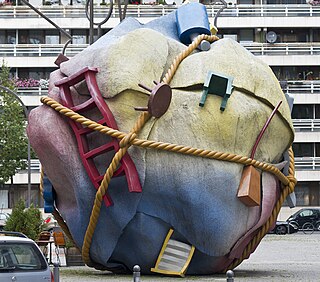
Houseball is an 11-metre-high sculpture by sculptors Claes Oldenburg and Coosje van Bruggen in Berlin's Mitte district. It is located on Bethlehem Church Square in front of the Philip Johnson House in the immediate vicinity of Friedrichstraße, where the former Bohemian Bethlehem Church stood from 1737 to 1963.
Sight 5: asisi Panorama - The Wall
Since September 2012, the Asisi Panorama Berlin has been located at the former Checkpoint Charlie at Friedrichstraße 205 and shows the panorama The Wall – the Asisi Panorama of divided Berlin. The monumental circular painting by Yadegar Asisi thematizes the Cold War and the division of German Germany in Berlin.
Sight 6: Mossehaus
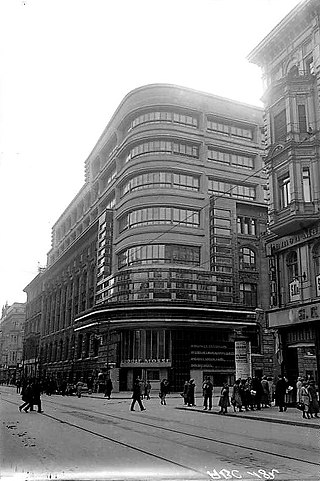
Mossehaus is an office building on 18–25 Schützenstraße in Berlin, renovated and with a corner designed by Erich Mendelsohn between 1921 and 1923.
Sight 7: Marion-Gräfin-Dönhoff-Platz
The Dönhoffplatz in Berlin on Leipziger Straße in the Mitte district was a square and green space named after the Prussian Lieutenant General Alexander von Dönhoff between the 1740s and 1975. In connection with the new development of Leipziger Straße, the square as such was abandoned in 1975. In 1979, a reconstruction of the Spittel colonnades was erected on the remaining nameless green area. In 2010, the area was given the name Marion-Gräfin-Dönhoff-Platz. The namesake Marion Gräfin Dönhoff comes - like Alexander von Dönhoff - from the noble family of the Dönhoffs.
Sight 8: Spittelkolonnaden
The Spittelkolonnaden in Berlin is a late Baroque ornamental building by Carl Philipp von Gontard on Marion-Gräfin-Dönhoff-Platz in the Mitte district near the Spittelmarkt. Originally, they consisted of an ensemble of two semicircular open columned halls, which at the time of their construction in 1776 served as the border of a bridge over the southern moat, which was an unsightly sewage ditch at the time.
Sight 9: Werkbundarchiv - Museum der Dinge
The Werkbund Archive – Museum of Things in Berlin is a museum dedicated to the material culture of the 20th and 21st centuries, which was shaped by industrial mass and commodity production.
Sight 10: Gertraudendenkmal
The Gertraudenbrücke and the Neue Gertraudenbrücke in Berlin lead Gertraudenstraße over the Spreekanal to Spittelmarkt in the Mitte district and connect the historic districts of Alt-Kölln and Neukölln am Wasser. The stone Gertrauden Bridge, built between 1894 and 1895, is a listed building and was extended with the New Gertrauden Bridge, which was built in 1977 as a steel girder bridge and runs parallel to the south, so that today there is an ensemble of two bridges. The Neue Gertraudenbrücke is part of Bundesstraße 1 and is part of the heavily frequented traffic arterial route in the area of historic Mitte Berlin, which leads from Potsdamer/Leipziger Platz via Leipziger Straße, Spittelmarkt and Molkenmarkt to Alexanderplatz.
Sight 11: Jungfernbrücke
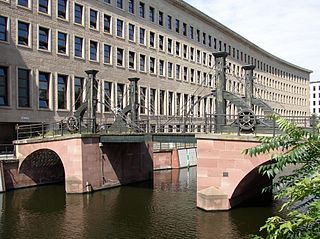
The Jungfern Bridge is a bridge in Berlin. It is the oldest bridge in Berlin. There have been nine predecessors on its site in Berlin-Mitte, spanning the Spree arm Kupfergraben and linking Friedrichsgracht to Oberwasserstraße.
Sight 12: Galgenhaus
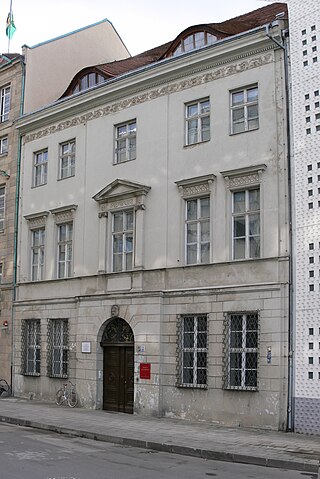
The Galgenhaus, also known as Palais Happe, Brüderstraße 10 in Berlin's Mitte district, is – like the Nicolaihaus two houses away – one of the few surviving old Berlin town houses whose origins date back to the 17th century and which are listed as historical monuments. The residential and office building was completed in 1688. The builder and first inhabitant of the house was probably the chamber councillor Wilhelm Heinrich von Happe. Heinrich Philipp von Happe is also named as the builder.
Sight 13: Schleuse Mühlendamm
The Mühlendammschleuse in Berlin is located in the district of Mitte east of the Mühlendamm on the Fischerinsel. It lies in the course of the Spree, which is part of the Spree-Oder waterway here. The lock was put into operation in 1942 and overcomes a drop height of 1.51 meters. It is the responsibility of the Spree-Havel Waterways and Shipping Authority. In 2006, the lock handled a volume of 3500 cargo ships, 15,933 passenger ships and 6,560 pleasure boats. Muscle-powered boats are not locked, as the traffic of small ships without engine propulsion is not permitted between the Chancellery jetty and the Oberbaum Bridge. The Mühlendamm lock is a listed building.
Sight 14: Inselbrücke
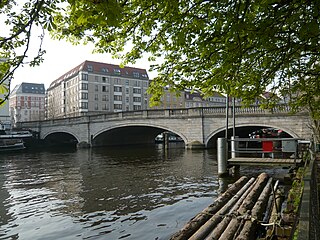
The Island Bridge is a road bridge over the western arm of the Spree that has existed since the 17th century. It is the first bridge on the Spree Island in the direction of the river and is located in the catchment area of the historic Berlin harbor. Today's stone arched bridge dates from 1912–1913, built according to plans by Ludwig Hoffmann and city planning officer Krause and is a listed building.
Sight 15: Herkules im Kampf mit dem Nemeischen Löwen
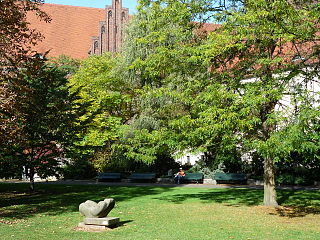
Köllnischer Park is a public park located near the River Spree in Mitte, Berlin. It is named after Cölln, one of the two cities which came together to form Berlin; the park location was originally just outside it. Approximately 1 hectare in area, the park came into existence in the 18th and 19th centuries on the site of fortifications. It was redesigned as a public park in 1869–1873 and was further modified in the 20th century with the addition of first a bear enclosure, the Bärenzwinger, and later a permanent exhibition of sculpture, the Lapidary. The park is a registered Berlin landmark.
Sight 16: Wusterhausener Bär
The Wusterhausener Bär or Wusterhausenische Baer is a small tower in the Köllnischer Park at the Märkisches Museum in Berlin's Mitte district. It is the last surviving part of Berlin's defences, which the Great Elector had built after the Thirty Years' War between 1662 and 1683.
Sight 17: Theaterhaus Berlin
The Theaterhaus Berlin is a central rehearsal and production location as well as a communication platform for independent performing artists of all genres in Berlin. The Theaterhaus Mitte became the Theaterhaus Berlin with the additional location in the Schöneweide district.
Sight 18: Roßstraßenbrücke
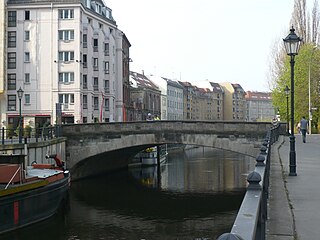
The Roßstraße Bridge is one of the three oldest Spree crossings in the city of Berlin. It was part of a traffic route to Köpenick and was located just behind the Köpenick Gate, which is why it was initially called the Köpenick Bridge. Today's Roßstraße Bridge was built of stone between 1899 and 1901. After severe damage in the Second World War, it was rebuilt in a simplified form. It connects the Fischerinsel with the historic Neu-Cölln district on the water and has been a listed building since the 1970s.
Sight 19: Grünstraßenbrücke
The Grünstraßenbrücke in Berlin's Mitte district is one of the early Spree crossings in the old Kölln city centre. Instead of a wooden yoke bridge with flaps for the ship passages, the stone Grünstraße bridge was built from 1903 to 1905. After partial destruction at the end of the Second World War and subsequent repairs, it has been on Berlin's list of architectural monuments since the 1970s.
Sight 20: Luisenstädtischer Kirchpark

The Luisenstädtische Kirchpark is located in Berlin's Mitte district on Alte Jakobstraße/Sebastianstraße. It is named after the Luisenstadt Church, which stood here until 1964.
Sight 21: Haus des Papiers
The House of Paper is a museum for fine paper art at Spitteleck in Berlin-Mitte, which opened on May 22, 2021.
Sight 22: Black Sun Press
The Black Sun Press sculpture is the work of sculptor Rolf Szymanski. It stands on the median strip of Lindenstraße in the Berlin district of Kreuzberg. It is part of an eleven-part exhibition entitled Art – City – Space at the Berlinische Galerie, which can be seen in public space.
Sight 23: Friede sei mit Dir
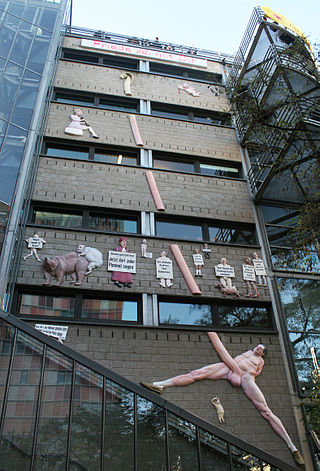
The relief sculpture Friede sei mit Dir, also known as the cock of Berlin, is an artwork by sculptor Peter Lenk. It is located in Berlin at the former building of the editorial staff of German newspaper taz.
Sight 24: Wall Museum
Get Ticket*The Checkpoint Charlie Museum is a private museum in Berlin. It is named after the famous crossing point through the Berlin Wall, and was created to document the so-called "best border security system in the world". On display are the photos and related documents of successful escape attempts from East Germany, together with the escape apparatus: hot-air balloons, getaway cars, chairlifts, and a mini-U-boat. The museum researches and maintains a list of deaths at the Berlin Wall. It is operated by the Mauermuseum-Betriebs gGmbH, and the director is Alexandra Hildebrandt.
Sight 25: Checkpoint Charlie
Checkpoint Charlie was the best-known Berlin Wall crossing point between East Berlin and West Berlin during the Cold War (1947–1991), as named by the Western Allies.
Sight 26: Trabi Museum
Get Ticket*The Trabi Museum Berlin is a car museum in Germany.
Sight 27: Topography of Terror
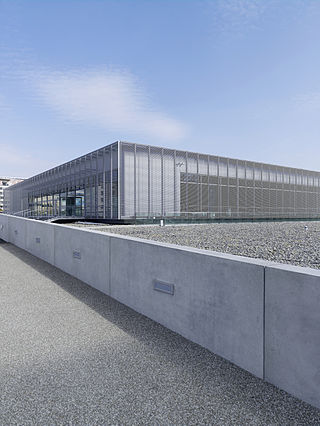
The Topography of Terror is an outdoor and indoor history museum in Berlin, Germany. It is located on Niederkirchnerstrasse, formerly Prinz-Albrecht-Strasse, on the site of buildings, which during the Nazi regime from 1933 to 1945 was the SS Reich Security Main Office, the headquarters of the Sicherheitspolizei, SD, Einsatzgruppen and Gestapo.
Sight 28: Karl August von Hardenberg
The Hardenberg monument to the right in front of the Prussian State Parliament, the seat of the Berlin House of Representatives, commemorates the Prussian statesman and reformer Karl August von Hardenberg (1750–1822).
Sight 29: Heinrich Friedrich Karl vom und zum Stein
The Stein monument on the left in front of the Prussian State Parliament, the seat of the Berlin House of Representatives, commemorates the Prussian statesman and reformer Karl Freiherr vom Stein (1757–1831). Created in the years 1864–1869 by Hermann Schievelbein and Hugo Hagen in the style of realism, it is one of the masterpieces of the Berlin School of Sculpture.
Sight 30: Federal Ministry for the Environment, Nature Conservation, Nuclear Safety and Consumer Protection
The Federal Ministry for the Environment, Nature Conservation, Nuclear Safety and Consumer Protection is a supreme federal authority of the Federal Republic of Germany. His headquarters or first office is in the federal city of Bonn, his second office in Berlin. Since 8 December 2021, the responsible federal minister in Scholz's cabinet has been Steffi Lemke of Bündnis 90/Die Grünen.
Wikipedia: Bundesministerium für Umwelt, Naturschutz und nukleare Sicherheit (DE), Website, Mastodon
Sight 31: St. Lukas-Kirche
St. Lukas Church is a church in the Berlin district of Kreuzberg. Together with the vestibule and campanile, it is built into the closed street front of Bernburger Straße. The church was built from 1859 to 1861 as a nave with cross arms under building inspector Gustav Möller. The design in the style of the royal basilica concept came from the head of the Prussian court and state building department, Friedrich August Stüler. The church was consecrated on 17 March 1861. It was destroyed on 29 April 1945. The church has been a listed building since 1953 and was rebuilt under the direction of the architect Georg Thofehrn. It was re-inaugurated on 19 December 1954. The church belongs to the church district of Berlin Stadtmitte. In 1960, the architect Henry Ziemendorf built the new administrative offices.
Wikipedia: St.-Lukas-Kirche (Berlin) (DE), Website, Heritage Website
Sight 32: Europahaus
Europahaus is a large high-rise office block in Berlin, Germany, located in the Kreuzberg district on Stresemannstraße, facing the remains of the former Anhalter Bahnhof railway terminus across Askanischer Platz. It was one of the first modern high-rise office buildings to be constructed in the city.
Sight 33: Dokumentationszentrum Flucht, Vertreibung, Versöhnung
The Foundation for Flight, Expulsion, Reconciliation is a foundation under public law based in Berlin that is dedicated to the remembrance and commemoration of flight and expulsion in the 20th century in Europe and beyond. It was launched by the German government in 2008.
Wikipedia: Stiftung Flucht, Vertreibung, Versöhnung (DE), Website
Sight 34: Elise-Tilse-Park
The Elise-Tilse-Park is a green space on the site of the former Anhalter Bahnhof in the Berlin district of Kreuzberg in the district of Friedrichshain-Kreuzberg. It was named on 24 April 2012 after Elise Tilse (1910–2005), the former head of the art department in Kreuzberg.
Sight 35: Pumpstation Radialsystem III
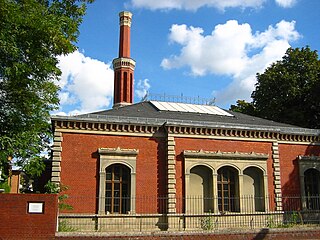
The Radialsystem III is a part of the sewer system of Berlin, which went into operation in 1878. The pumping station of Radialsystem III on today's property at Hallesches Ufer 78 was the city's first wastewater pumping station, making the surviving pump house the oldest architectural testimony to Berlin's wastewater disposal and has been a listed building since 1977.
Sight 36: Mendelssohn-Bartholdy-Park
Mendelssohn-Bartholdy-Park is a green space at the U2 underground station of the same name in the Kreuzberg district of Berlin, Germany. It was built between 1960 and 1967 according to plans by O. Longhardt, H. Preuß, K. Schaller and E. Schmäls on the site of the former Schöneberg harbour. The park is named after the composer Felix Mendelssohn Bartholdy.
Sight 37: Köthener Brücke
Die Köthener Brücke ist eine im Jahr 1910 fertiggestellte Straßenbrücke im Berliner Ortsteil Kreuzberg, die Köthener Straße vom Reichpietschufer / Halleschen Ufer zum Schöneberger Ufer über den Landwehrkanal führt.
Sight 38: Park am Gleisdreieck - Westpark
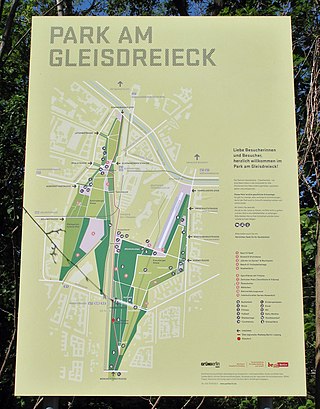
The Park am Gleisdreieck is a public green and recreational area in Berlin. The park, which covers around 31.5 hectares, is located on the wasteland of the former Anhalter and Potsdam freight station at Gleisdreieck and stretches from the Landwehr Canal via Yorckstraße to the Monumentenbrücke. The complex consists of three parts of the park, which were opened between 2011 and 2014:Ostpark in Kreuzberg, 17 hectares, opened on 2 September 2011, Westpark in Kreuzberg, 9 hectares, opened on 31 May 2013, Dora Duncker Park in Schöneberg, 5.5 hectares, opened on 21 March 2014.
Share
How likely are you to recommend us?
Disclaimer Please be aware of your surroundings and do not enter private property. We are not liable for any damages that occur during the tours.
GPX-Download For navigation apps and GPS devices you can download the tour as a GPX file.
